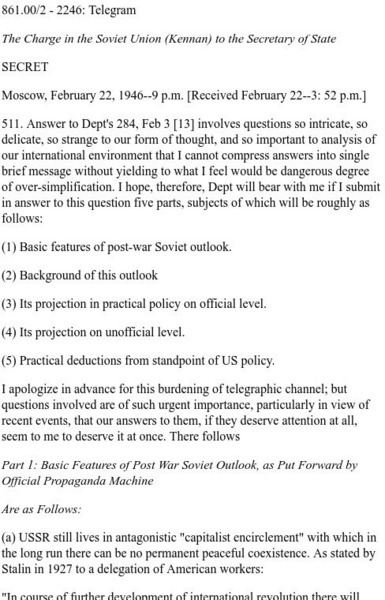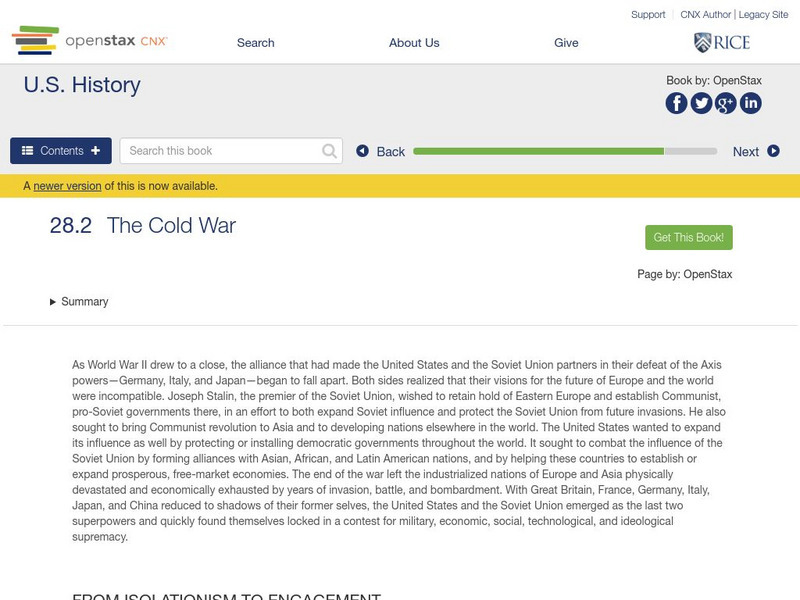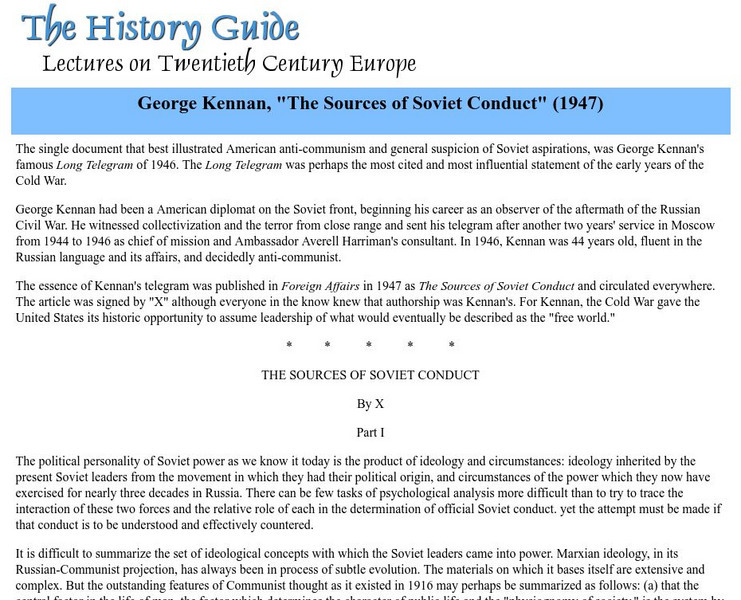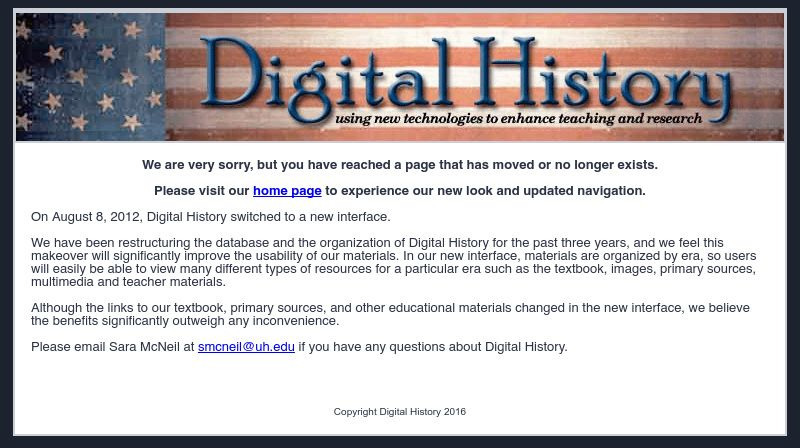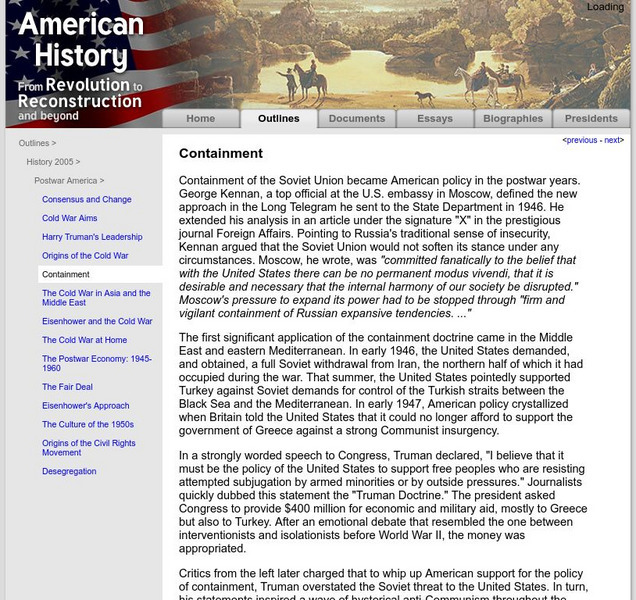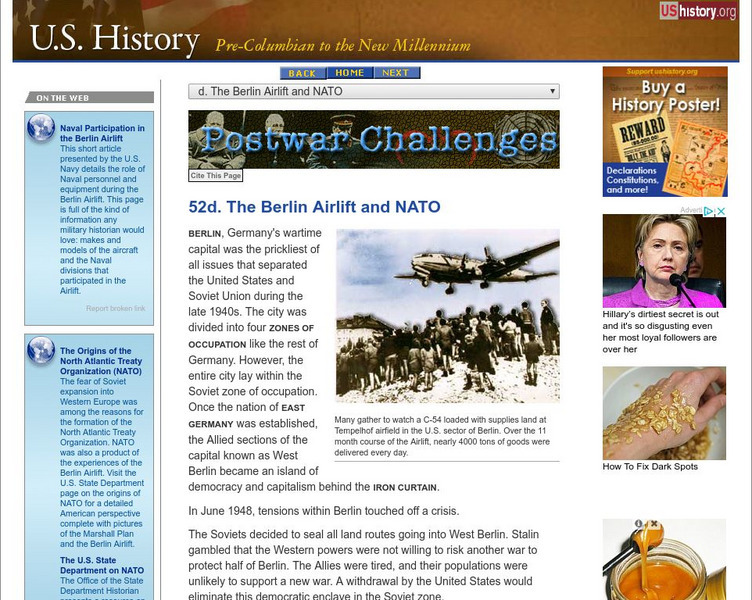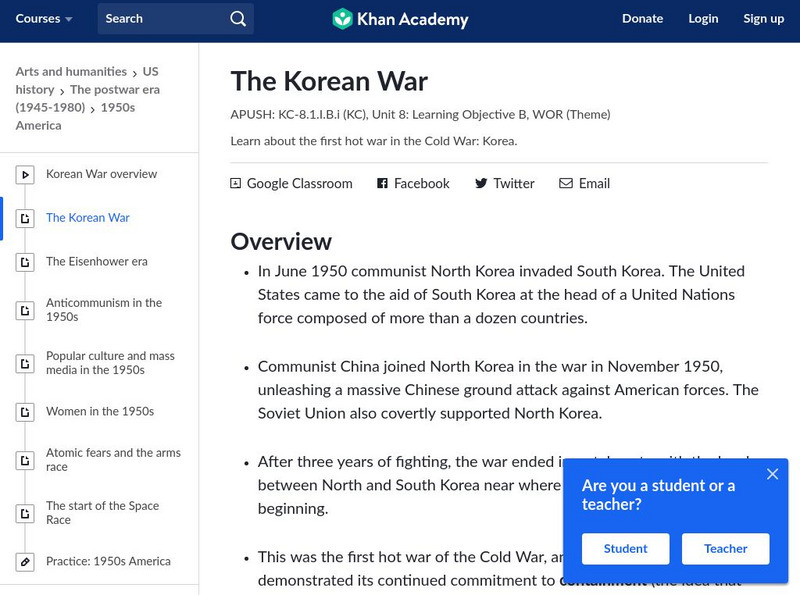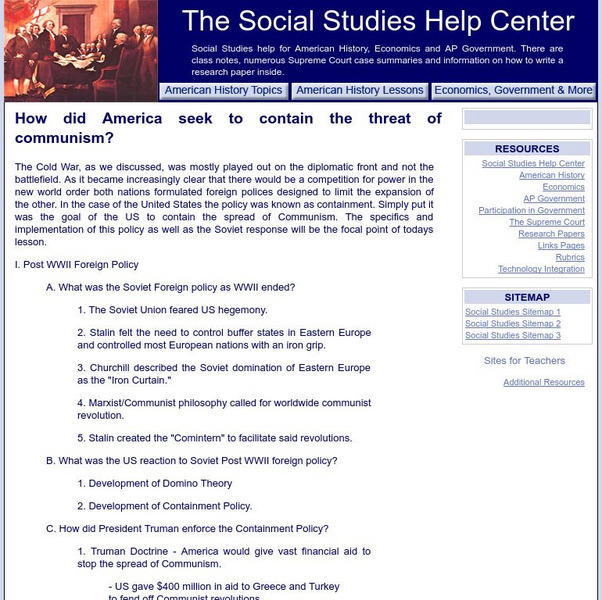Curated OER
1960 America: Foreign Policy
The 1960's marked shifts in American culture, politics, and policy. Your class groups up to research a series of primary source documents resulting in a timeline and a 15 minute oral presentation. Active learning all the way.
Curated OER
Foreign Policy: Containment
Young scholars examine opinions regarding the American policy of containment. In this Cold War lesson, students read articles by George F. Kennan and Walter Lippmann. Young scholars compare the perspectives of the 2 men on U.S....
Harry S. Truman Library and Museum
Truman Library: Telegram, George Kennan to George Marshall [Pdf]
See the "long telegram" sent by George Kennan to Secretary of State George Marshall in which he expressed his unflattering view of the USSR.
George Washington University
National Security Archive: George Kennan's "Long Telegram"
Find the entire contents of George Kennan's "Long Telegram" in which he expressed outlook on post-war Soviet Union. It was not flattering.
OpenStax
Open Stax: Post War Prosperity and Cold War Fears 1945 1960: The Cold War
Examines the causes of the Cold War, America's efforts to oppose the spread of Communism, and the hunt for Communist sympathizers within the United States.
Steven Kreis, PhD
The History Guide: The Sources of Soviet Conduct
This sums up the ideas of containment. It is a telegram that was widely published.
Digital History
Digital History: Postwar America: 1945 1960
Chapter focus on the political, social, and economic events following World War II. Examines both foreign and domestic issues, including the origins of the Cold War and Civil Rights movements.
Digital History
Digital History: Postwar America: 1945 1960, the Containment Policy
Digital History discusses the Containment Policy of the 1950s. Includes information on the Marshall Plan, the fate of Germany, the Berlin blockade, and NATO.
Digital History
Digital History: Years of Decision [Pdf]
This site is from a unit that covers the period from the Second World War up to the Cold War. It looks at relations between the United States and the Soviet Union and the thinking of their leaders. Students are asked to consider five...
University of Groningen
American History: Outlines: Containment
Article outlines the U.S. policy to keep the spread of communism at bay and the Soviets in check.
PBS
Pbs: American Experience: George F. Kennan
PBS profiles the life of American diplomat George F. Kennan, whose ideas about the expansionist ambitions of the Soviet Union shaped the U.S. policy toward Communist countries known as containment.
PBS
Pbs News Hour: Essays and Dialogues: George Kennan
Transcript of a NewsHour interview with George F. Kennan (1904-2005), the man credited with articulating the policy of containment that shaped U.S. foreign policy toward communism at the start of the cold war.
Independence Hall Association
U.s. History: The Berlin Airlift and Nato
President Harry Truman was determined to contain the Soviet sphere of influence in Europe. See how the United States and Great Britain stood up to Stalin's attempt to take over West Berlin by blockading access to the city. Understand why...
Khan Academy
Khan Academy: Start of Cold War, Part 1: Yalta Conference and Containment
At the end of World War II, the Yalta Conference saw the splitting of Germany into four zones and the United States began a policy of containment of communism.
Digital History
Digital History: Origins of the Cold War
A look at the origins of the Cold War by examining primary sources. Questions to think about are included to check understanding.
US Department of State
U.s. Department of State: Office of the Historian: Kennan and Containment: 1947
Documentary record of the U.S. policy of containment as articulated by the official historian of the U.S. Department of State.
Siteseen
Siteseen: American Historama: Containment
The purpose of the United States policy of Containment was to restrict the spread of communism abroad and was strongly associated with the Domino Theory.
Siteseen
Siteseen: American Historama: Domino Theory
Many of the Cold War presidents used the Domino Theory as the main justification for their involvement and intervention in the affairs of Eastern Europe, the Middle East, China, Korea, Cuba, and Vietnam as it related to the spread of...
Social Studies Help Center
Social Studies Help Center: How America Contained the Threat of Communism
This site discusses America's post-World War II foreign policy in outline form.




![Truman Library: Telegram, George Kennan to George Marshall [Pdf] Primary Truman Library: Telegram, George Kennan to George Marshall [Pdf] Primary](https://d15y2dacu3jp90.cloudfront.net/images/attachment_defaults/resource/large/FPO-knovation.png)
